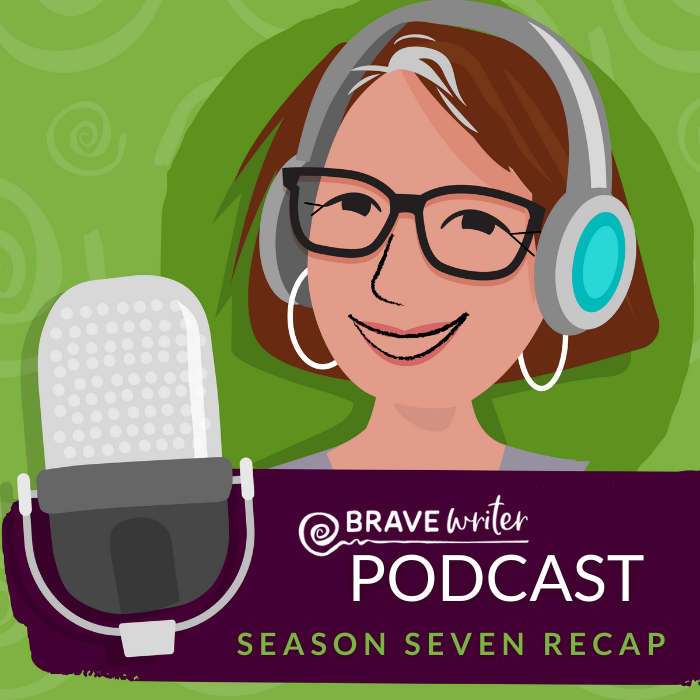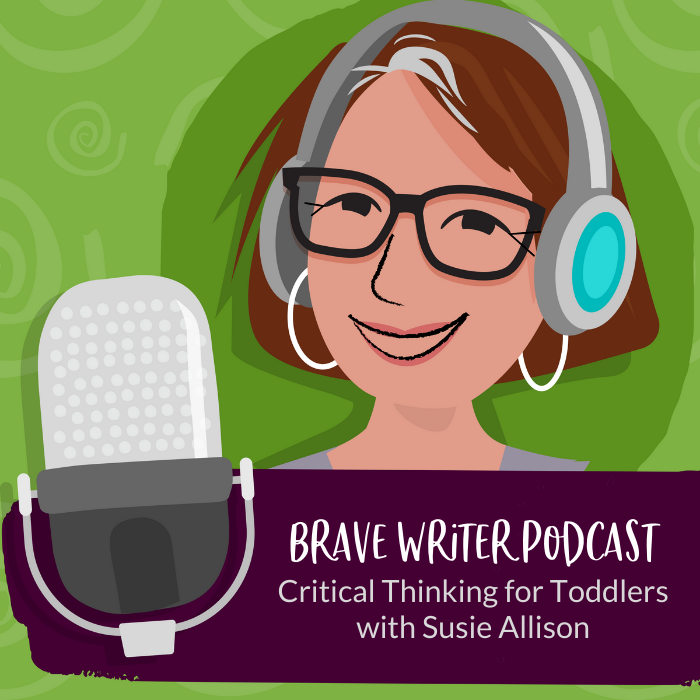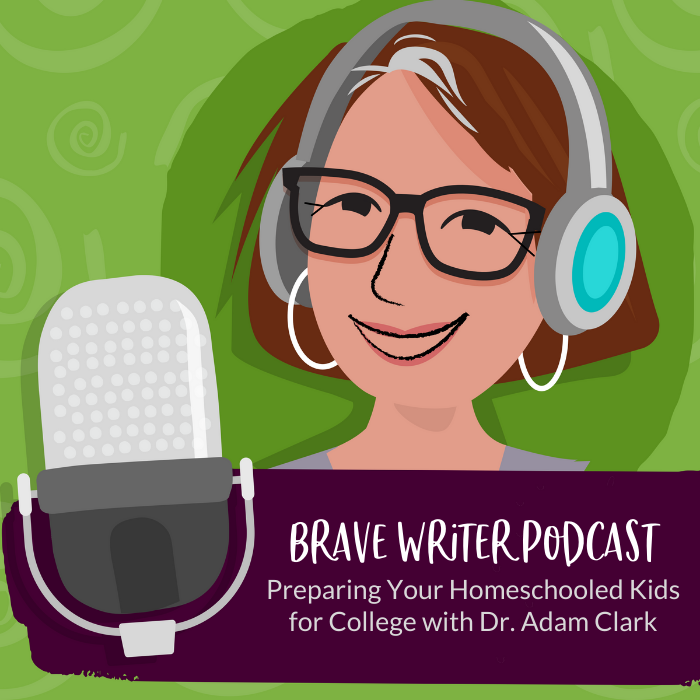
Did you miss an episode from the seventh season of the Brave Writer Podcast? Did you want to listen to an episode again?
Not to worry!
Here are the episodes from season seven of the podcast in one convenient place so that you can listen (or re-listen) to them whenever you want.
Tune in to the Brave Writer podcast on Apple Podcasts, Stitcher (or your app of choice), and here on the Brave Writer blog.
Season Seven Podcasts
S7E1: Practicing Psychological Flexibility and ACT with Dr. Diana Hill
S7E2: The Educational Value of Video Games with Ash Brandin
S7E3: Homeschool Unrefined with Maren Goerss & Angela Sizer
S7E4: How Enneagram Types Think Critically with Leslie Hershberger
S7E5: Preparing Your Homeschooled Kids for College with Dr. Adam Clark
S7E6: Thinking Critically, Aging Gracefully & Being a True Influencer with Lyn Slater, Accidental Icon
S7E7: Critical Thinking for Toddlers with Susie Allison of Busy Toddler
S7E8: How to Face the Facts When Discussing Politics with Sharon McMahon
Would you please post a review on Apple Podcasts for us?
Help a homeschooler like you find more joy in the journey. Thanks!




















